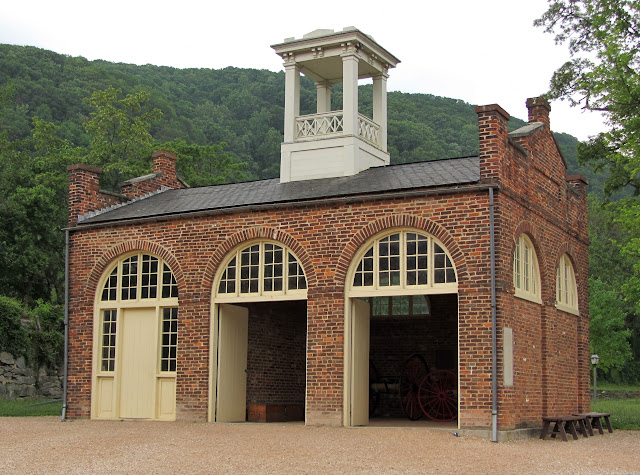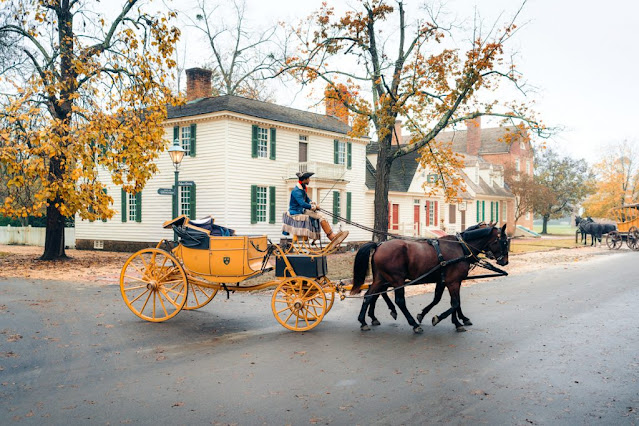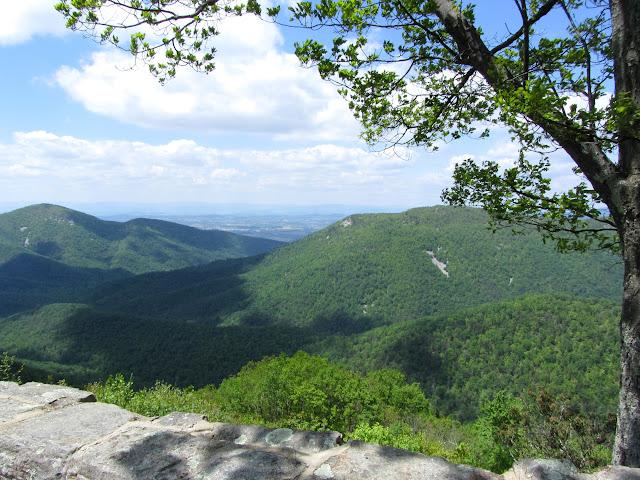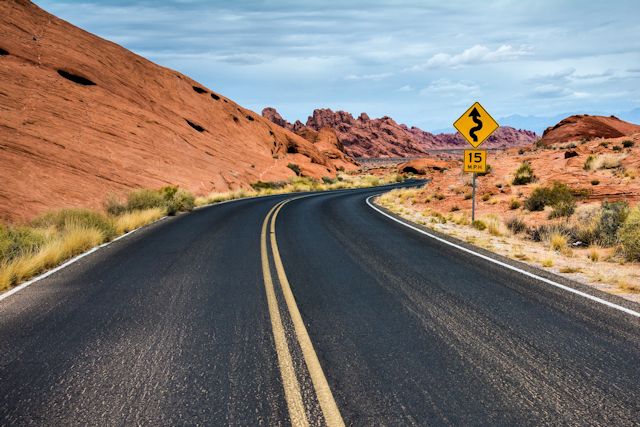Carnage in a Cornfield
ON THE HISTORY HIGHWAY, Day 56:
Hagerstown, MD to Strasburg, VA space
After searching for a couple of letterboxes in Fort Frederick State Park near Hagerstown, we drove east to Boonsboro to visit Washington Monument State Park. No, that is not a typo. And no, we're not talking about the 555-ft. obelisk on the Washington Mall. That tribute wasn't even begun until more than twenty years after the one we visited today was completed.

According to a contemporaneous newspaper account, the citizens of Boonsboro, MD, decided in 1827 to build a monument to the young nation's first president. This was a grassroots effort, and on July 4 of that year, most of the town's citizens assembled behind an American flag and paraded with a drum and fife corps to the summit of nearby South Mountain. Using granite stones found on site, the citizens worked until noon and then held a dedication ceremony. They resumed work and by 4 p.m. the monument stood 15 feet high on a 54-foot circular base
(pictured above). The day ended with the reading of the
Declaration of Independence and a three-round salute fired by Revolutionary War veterans. Workers returned in September to finish the monument which stood 32 feet high upon completion. Today, as then, visitors can climb to the top for a great view of the valley below.
(For some strange reason, we left there thinking about a nice glass of milk.)
 |
| "Find the large flat rock." |
Before leaving the area, we talked to some hikers and took a short walk on the Appalachian Trail, which traverses the park. Off the trail, we found a couple of letterboxes, including one which asked us to find the "very large flat
rock" in an ocean of granite. We were quite astonished when we actually uncovered the letterbox.
From Boonsboro, we drove ten miles to Sharpsburg to visit Antietam National Battlefield. As in Gettysburg yesterday, we found the parking lot at Antietam pretty full. Based on our positive experience with advice from a savvy ranger at Saratoga National Historical Park and our limited time, we asked one of the park rangers to point out the top priority sites on the driving tour. He cited the cornfield, sunken road, and lower bridge, the three areas that were the centers of fighting during the battle, so those are the places we visited.
On September 17, 1862, more than 23,000 were killed or wounded at Antietam, the bloodiest single-day battle in U.S. history. The First Texas Infantry lost 82% of their men killed, wounded or missing while fighting in Miller's Cornfield, the highest casualty rate for any Confederate regiment in one battle of the Civil War.
From dawn to 9:30 a.m., a storm of lead, iron and flame flew across a Maryland cornfield, as 27,000 troops engaged in a fierce battle. By the end of fighting, more than 8,000 lay dead or dying. Union General Hooker described the scene: "Every stalk of corn in the northern and greater part of the field was cut as closely as could have been done with a knife, and the slain lay in rows precisely as they stood in their ranks a few moments before. It was never my fortune to witness a more bloody, dismal battlefield."
 |
| Sunken Road at Antietam |
After the morning of slaughter at the cornfield, the battle moved to where the middle of the Confederate line was anchored on a track that locals called Sunken Road. By the end of the day, this strip was known as "Bloody Lane," the site of an intense four hours of brutal fighting.
The third and last phase of the battle focused on the efforts of a greatly outnumbered Confederate force to hold onto a bridge that spanned Antietam Creek. Their success in delaying the Union capture of this critical junction allowed Confederate reinforcements to arrive from Harpers Ferry. This addition to the Southern force, coupled with Union commander McClellan's errors in judgment, resulted in a stand-off at the end of the day. The following day, with no clear victory for either side, Lee withdrew his army back into Virginia.
 |
| Confederate soldiers near Dunker Church (image from Library of Congress) |
Antietam was the first American battlefield photographed before the dead were buried, and the graphic images shocked the nation and the world. The photo here of dead Confederate soldiers and a crippled artillery limber was taken by Alexander Gardner two days after the battle.
 |
| Battlefield Monument |
In the midst of dozens of formal and traditional granite monuments on the battlefield was an unusual but meaningful tribute to Pennsylvania soldiers who fought at Antietam. The inscription reads:
"Here fought the 90th Penna. (Phila.). Sept. 17, 1862. A hot place."
In an odd twist, we saw the park service implementing the flip side of restoration work we encountered at the Vicksburg (MS) National Military Park in January. Whereas a large section of the Mississippi park had been deforested to restore it to its condition at the time of that battle, trees have been planted at Antietam in an effort to re-establish the forest which flourished here in September, 1862.
Our last major stop of the day was at Harpers Ferry, WV, just 14 miles from Antietam. When we arrived, we tried to locate a tri-state marker at this spot where Maryland, Virginia, and West Virginia meet, but all the locals we asked said there wasn't one.
 |
| Harpers Ferry |
Standing at the crossroads where the Potomac and Shenandoah Rivers meet
before crashing their way through the mountains, Harpers Ferry has been
the scene of many historic events. In 1796, President Washington
persuaded Congress to establish a federal arsenal and weapons production
facility in the town, the genesis of its expansion and, later, of its
destruction. In 1803, the armory supplied Meriwether Lewis with weapons and other
items his expedition party would need for their exploration of the newly
acquired Louisiana Territory.
 |
| Firehouse used as John Brown's fortress |
Fifty-six years later, in 1859, the
radical abolitionist John Brown led a group of 21 raiders in an attack
on the armory, hoping to capture weapons to be
used in a widespread slave uprising. Local militia penned the invaders
in the armory's firehouse until U.S. Marines, under the command of Lt.Col. Robert E. Lee, arrived and captured Brown and his followers. Since
this infamous event, the building has been vandalized by souvenir
seekers, dismantled, taken on tour, and moved four times, before it was
finally re-situated within 150 feet of its original location by the
National Park Service in 1968.
Made desirable because of its armory, Harpers Ferry changed hands several times during the course of the Civil War. Each time an occupying army left the town, fires were set to keep weapon-making capabilities out of the hands of the other side.
By the end of the war, what had been a prosperous town was a ghost of its former self. Many years of rebuilding were needed and the town was never the same. In 1944, most of the town became Harpers Ferry National Historical Park. Since then a few businesses have grown up to serve tourists and outdoor enthusiasts who come to the area for such activities as rafting and rock climbing.
With its location near the midway point of the 2,181-mile Georgia-to-Maine Appalachian Trail, Harpers Ferry is home to the AT Conservancy, which coordinates maintenance and protection of the trail, as well as education and awareness activities. Harpers Ferry is one of only a few towns that the trail passes through.
 |
| Appalachian Trail goes up the stairs. |
Part of the path the trail takes through the town leads up a set of stairs past an old church, and uphill to Jefferson Rock overlooking the river. While up in the area near the rock, we planted our West Virginia letterbox before leaving the town and the state. Rain followed us all the way to Strasburg, VA, our stopping place for the night.
WEDNESDAY, 9 MAY 2012




















































